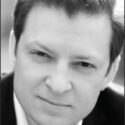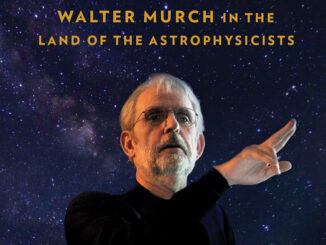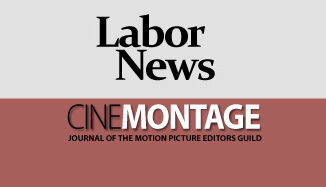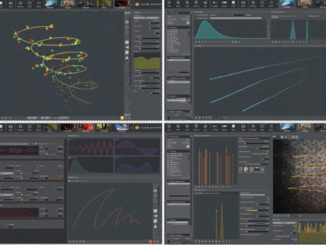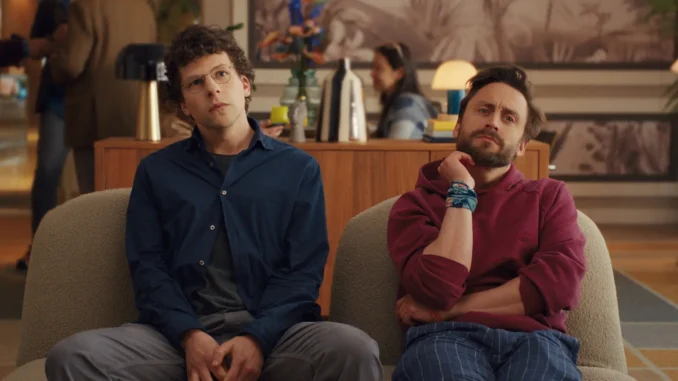
By Rob Feld
Robert Nassau’s path to film editing began as it does for many: movie nerd-dom. He knew he wanted to do something in film but didn’t know what. His first movie gig was a summer job filling out a character’s prop address book, filling out made-up addresses with different colored pens for a one-second insert shot. While observing the various departments on set to get himself to where a movie is actually made, he realized that directing looked competitive, producing looked like it meant being the guy who was always on his phone, and cinematography meant a hoisting a heavy camera. Editing, however, stood out as a creative and technical balance, leading him to explore it further as a film student.
Nassau’s timing was serendipitous. As digital editing began to eclipse film, he landed his first job because he was familiar with Avid. Along the way, he absorbed lessons from editors he met during film school at RISD and later in Prague, and from influential mentors like Paula Heredia. His big break came in New York, where he worked on documentaries and reality TV before finding his niche in comedy editing.
“I’m proud of the weird, crappy projects I did early on—like editing German businessmen talking about IBM computers for market research,” he said. “Even then, I thought, ‘Well, it’s not Hollywood, but I’m cutting moving pictures.’ Every job teaches you something.” From web comedies that gained traction to acclaimed collaborations with directors like David Wain and Michael Showalter, Nassau worked his way into established comedy circles.
His most recent film, “A Real Pain,” directed by Jesse Eisenberg, follows cousins David (Eisenberg) and Benji (Kieran Culkin) as they embark on a journey to Poland to explore their Jewish heritage and honor their late grandmother, who survived a Nazi concentration camp. David, anxious but leading a conventional life, contrasts with the emotionally volatile and fragile but charismatic Benji, who seems forever lost. As they navigate historical sites and personal memories, the film delves into themes of generational trauma, identity, and familial bonds. Nassau faced a challenge of balancing humor and pathos, with unique pacing.
CineMontage: You’ve been working in a number of comedy circles, including Apatow-world. How did “A Real Pain” come to you?
Robert Nassau: I was working on “Shortcomings,” directed by Randall Park, and one of the producers, Ryan Heller from Topic, mentioned Jesse’s movie to me. He said, “I think you two would really get along.” I read the script, thought it was terrific, and when I met Jesse, we hit it off. I understood where he was coming from, and it just seemed to click right away.
CineMontage: What did you and Eisenberg talk about in terms of the film’s voice or style? It’s got a lot of jump cuts. Did you find that organically, or was it discussed early on?
Nassau: The script was very clean and spare—something I aspire to and really relate to. It struck the balance between funny and sad, which is in my wheelhouse. We didn’t fully nail the style until I had the visuals to respond to, but the tone was clear from the start. Jesse trusted me to explore that.
CineMontage: How did your collaboration work?
Nassau: Jesse’s one of those actors who doesn’t watch himself on screen. Early on, after the first day of shooting in Poland, he called me in a panic, saying, “I can’t watch myself—I’m terrible. Everything’s terrible.” He trusted me and the producers to make sure things were working. We’d check in a couple times a week, but he didn’t see anything until I had an assembly ready in New York. I made him watch it, “Clockwork Orange”-style—strapped in. Once he got past that, he was able to objectively assess the film, and we worked really well together after that.
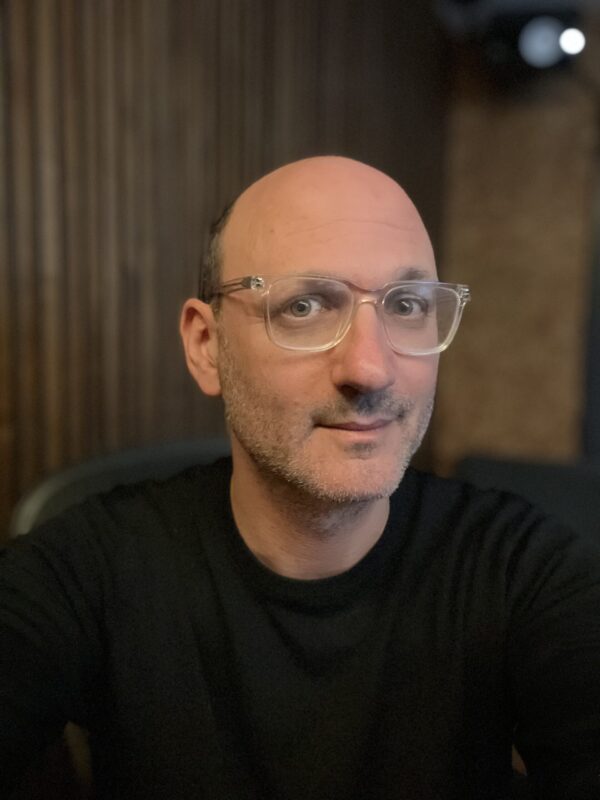
CineMontage: What did you draw from the footage to shape the pacing and tone?
Nassau: There was a lot of freedom in pace. It’s written to be dialogue-heavy but also has these long, spare traveling shots. I had room to play, finding the right flow between talky scenes and those contemplative moments. Jesse had also planned to use Chopin’s music in the score, which gave me an emotional guide. That decision worried some studio folks, but I thought it was perfect—it floated above the action, offering an objective presence without dictating the emotional beats too hard. Sometimes the music accentuated the humor subtly, which worked beautifully. I learned a term from Judd Apatow—“sweaty”—meaning try-hard comedy. You never want to be “sweaty.” The Chopin pieces kept things feeling effortless, which is always my goal in editing: to make it seem natural even though a lot of work goes into that.
CineMontage: Did you absorb a different approach or sensibility while studying at FAMU in Prague, and perhaps apply it to this Europe-based story?
Nassau: I think it has more to do with the individual teachers and the structure of the curriculum than any big cultural differences. That said, I think there was a something special about Czech filmmakers of a certain era and their sense of humor. Some have said it’s related to being from a country that was occupied for most of its history. The Czech directors I really admired—Jan Nemec, Jiři Menzel, Milos Forman, VojtěchYasný, Věra Chytylová, Ivan Passer—made humanistic films, often with a wry sense of humor and a somewhat subversive political subtext. I remember going to Menzel’s office, where he held forth to a group of students. I would really have loved to have heard Forman too, but he was in New York teaching at Columbia, and my grades weren’t good enough. My friends and I belonged to a cinema club at that time—basically, a screening room with communist-era cigarette smoke-soaked chairs, where they showed some films by directors that inspired me—William Wyler, Jean Vigo, Rene Clair— again, more funny, humanist stuff. I do think there is a difference between European and American modes today, which Jesse and I were aware of in making “A Real Pain.” We tried to chart a path perhaps halfway through what you might expect from one or the other. At one point in the edit, we had a roughcut screening for friends, and true to type, a European filmmaker in attendance wanted us to linger on the landscapes more, while a Hollywood filmmaker friend wanted us to have a happier ending, so we figured we were on the right track.
CineMontage: What was a great challenge you remember on this project?
Nassau: There are two emotional rooftop scenes that took careful calibration of performances and pacing. On the lighter side, there’s a scene where the guys watch TV. Originally, they were supposed to be watching a Polish soap opera or cop show, but it felt too interesting or engaging. Then we thought Polish infomercial but it was also too interesting. The joke was that they’re stoned and watching TV. Then it occurred to me, what about the menu that’s on the hotel screens? Anytime there’s a screen in a movie, it’s like the editor’s gone crazy with that stuff. We were proud of that decision.
CineMontage: What other key lessons came from working on this film?
Nassau: Pacing was crucial. We didn’t want to impose on the audience by being too heavy-handed. Jesse and I both value restraint—letting the audience come to the story. I even have a rule I call the St. Crispin’s Day Rule, where no monologue should be longer than Olivier’s in “Henry V.” That one clocks in at about two minutes and 18 seconds. We might’ve crossed it. I’m not sure, but I think we’re just under the wire in the restaurant scene.
CineMontage: That’s a rule worth propagating! What about performance? How did you approach that in the edit?
Nassau: Performance is my top priority. The moments that feel most real drive both comedy and drama. I always remind myself of the ancient Roman “editor,” the guy who gave thumbs up or down to gladiators in the arena. We still have that power—performers live or die by our decisions in the edit room.


